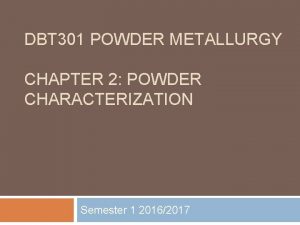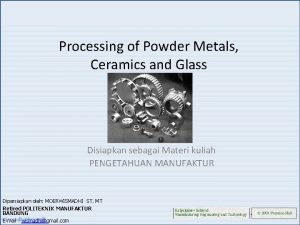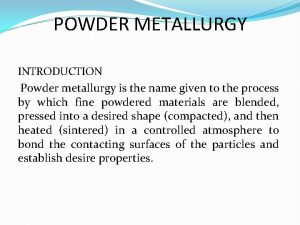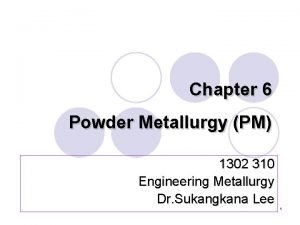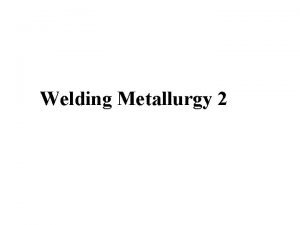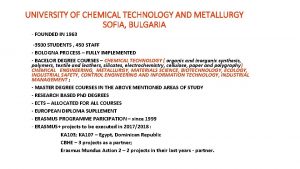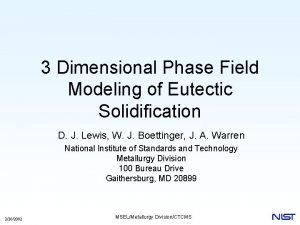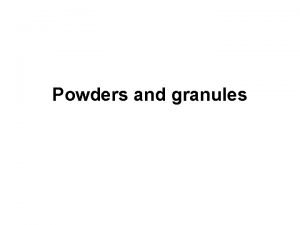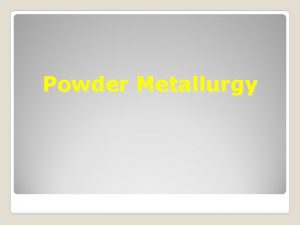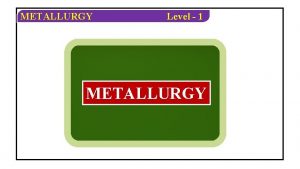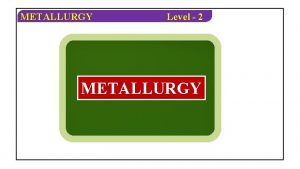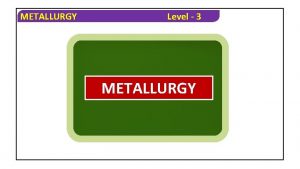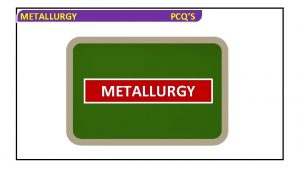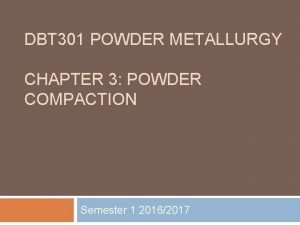POWDER METALLURGY Powder metallurgy PM is a metal








- Slides: 8

POWDER METALLURGY Powder metallurgy (PM) is a metal processing technology in which parts are produced from metallic powders. The tooling, which typically consists of a die and one or more punches, can be expensive, and PM is therefore most appropriate for medium and high production. Usual PM production sequence: 1. 2. Pressing - powders are compressed into desired shape to produce green compact Accomplished in press using punch-and-die Sintering - green compacts are heated to bond the particles into a hard, rigid mass Temperatures are below melting point PM Process Powder Production Powder Characterization & testing Mixing - Blending Processing - Compacting Sintering Operation Finishing Operations Finished P/M Parts 1

Why Powder Metallurgy is Important 1. PM parts can be mass produced to net shape or near net shape, eliminating or reducing the need for subsequent processing. 2. PM process wastes very little material; about 97% of the starting powders are converted to product. This compares favorably with casting processes in which sprues, runners, and risers are wasted material in the production cycle. 3. PM parts can be made with a specified level of porosity, to produce porous metal parts. This feature lends to the produce of porous metal parts such as filters and oilimpregnated bearings and gears. 4. PM can shape the certain metals that are difficult to fabricate by other methods. • Tungsten is an example; tungsten filaments used in incandescent lamp bulbs are made using PM technology. 5. Certain alloy combinations and cermets made by PM cannot be produced in other ways 6. PM production methods can be automated for economical production. 7. PM compares favorably to most casting processes in dimensional control. 2

Limitations of PM � High tooling and equipment costs � Metallic powders are expensive � Problems in storing and handling metal powders (such as degradation over time, fire hazards with certain metals) � Limitations on part geometry because metal powders do not readily flow laterally in the die during pressing � Variations in density throughout part may be a problem, especially for complex geometries PM Work Materials � Largest tonnage of metals are alloys of iron, steel, and aluminum � Other PM metals include copper, nickel, and refractory metals such as molybdenum and tungsten � Metallic carbides such as tungsten carbide are often included within the scope of powder metallurgy 3

Engineering Powders A powder can be defined as a finely divided particulate solid � Engineering powders include metals and ceramics � Geometric features of engineering powders: � Particle size and distribution � Particle shape and internal structure � Surface area Collection of PM Parts (photo courtesy of Dorst America, Inc. Particle Size and Distribution Particle size refers to the dimensions of the individual powders. Measuring Particle Size � Most common method uses screens of different mesh sizes � Mesh count - refers to the number of openings per linear inch of screen. � A mesh count of 200 means there are 200 openings per linear inch � Since the mesh is square, the count is equal in both directions, and the total number of openings per square inch is 2002 = 40, 000 � Higher mesh count = smaller particle size 4

The powders are placed on a screen of a certain mesh count and vibrated so that particles small enough to fit through the openings pass through to the next screen below. The second screen empties into a third, and so forth, so that the particles are sorted according to size. Classification: is the procedure of separating the powders by size. The openings in the screen are less than the reciprocal of the mesh count because of the thickness of the wire in the screen, as illustrated in Figure 2. Assuming that the limiting dimension of the particle is equal to the screen opening: where PS = particle size, in MC = mesh count, openings per linear inch; tw = wire thickness of screen mesh, in. 5

The figure shows how smaller particles would pass through the openings, whereas larger powders would not. The screening method has a practical upper limit of MC= 400 (approximately), because of both the difficulty in making such fine screens and agglomeration of the small powders. Other methods to measure particle size include microscopy and X-ray techniques. Typical particle sizes used in conventional powder metallurgy (press and sinter) range between 25 and 300 mm. Screen Mesh for Sorting Particle Sizes FIGURE 2 Screen mesh for sorting particle sizes. 6

Particle Shape and Internal Structure There will be a variation in the particle shapes in a collection of powders, just as the particle size will vary. Measuring Particle Shape A simple and useful measure of shape is the aspect ratio-the ratio of maximum dimension to minimum dimension for a given particle. The aspect ratio for a spherical particle is 1. 0, but for an acicular grain the ratio might be 2 to 4. Microscopic techniques are required to determine shape characteristics. Any volume of loose powders will contain two types of pores: open pores are pores between the particles and they are external spaces to the individual particles into which a fluid such as water, oil, or a molten metal can penetrate. closed pores are internal pores in the structure of an individual particle. The existence of these internal pores is usually minimal, and their effect is minor, but they can influence density measurements. Particle Shapes in PM FIGURE 3 Several of particle shapes in powder metallurgy. 7

Surface Area Assuming that the particle shape is a perfect sphere, its area A and volume V are given by where D = diameter of the spherical particle, mm. The area-to-volume ratio A/V for a sphere is then given by In general, the area-to-volume ratio can be expressed for any particle shape-spherical or nonspherical-as follows: where Ks = shape factor; D in the general case = the diameter of a sphere of equivalent volume as the nonspherical particle, mm. Thus, Ks = 6. 0 for a sphere. For particle shapes other than spherical, Ks > 6. Conclusions from these equations ØSmaller particle size and higher shape factor (Ks) mean higher surface area for the same total weight of metal powders. This means greater area for surface oxidation to occur. ØSmall powder size leads to more agglomeration of the particles, which is a problem in automatic feeding of the powders. Øusing smaller particle sizes provides more uniform shrinkage and better mechanical properties in the final PM product. 8
